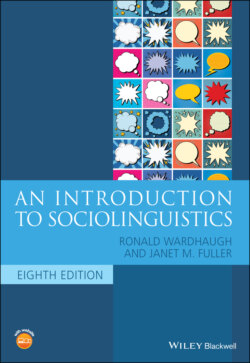Читать книгу An Introduction to Sociolinguistics - Ronald Wardhaugh, Janet M. Fuller - Страница 48
The standard–dialect hierarchy
ОглавлениеBecause of the sociopolitical salience of the standard, is it often seen as the language itself, while regional or social varieties are considered subordinate to the standard. Some people are also aware that the standardized variety of any language is actually only the preferred dialect of that language: Parisian French, Florentine Italian, Beijing Mandarin, or the Zanzibar variety of Swahili in Tanzania. It is the empowered variety. As a result, the standard is often not called a dialect astandard is often not called a dialect at all, but is regarded as the language itself. It takes on an ideological dimension and becomes the ‘right’ and ‘proper’ language of the group of people, an attitude which has social consequences. One consequence is that all other varieties have none of the status and power of the standard. Of course, this process of standardization and stigmatization usually involves a complete restructuring of the historical facts.
We see a good instance of this process in Modern British English. The new standard is based on the dialect of the area surrounding London, which was just one of several dialects of Old English, and not the most important since both the western and northern dialects were once at least equally as important. However, in the modern period, having provided the base for Standard English, this dialect exerts a strong influence over all the other dialects of England so that it is not just first among equals but rather represents the modern language itself to the extent that the varieties spoken in the west and north are generally regarded as its local variants. Historically, these varieties arise from different sources, but now they are viewed only in relation to the standardized variety. Thus, regardless of the actual history of a language, the standard is often regarded as the original language and the dialects as deviations from it.
